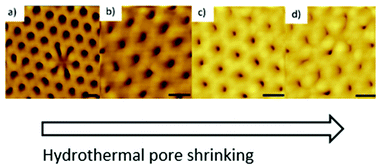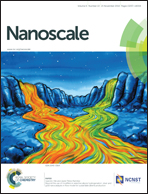Controlled hydrothermal pore reduction in anodic alumina membranes
Abstract
Porous anodic aluminium oxide nanostructures are popular templates for the fabrication of a wide range of nanomaterials. When open at both ends, they are now being used as model membranes, called anodic alumina membranes (AAM). In both cases, their appeal resides in the possibility of accurately controlling pore size via the anodization voltage, with a narrow size distribution. This characteristic, though, is maintained only in specific pore size ranges, reflecting specific ordering regimes in the material. Outside these domains, less ordered structures are obtained. Furthermore, the smallest pores currently achieved by anodization are about ∼10 nm in diameter, using sulphuric acid, which yields very thin and fragile nanostructured membranes. In this work we address these limitations by decoupling the control of pore size from the anodization stage. We achieve this by subjecting AAMs produced under a high order regime (40 V, 0.3 M oxalic acid) to a post-anodization hydrothermal treatment using steam. With this process we were able to decrease the pore size by 80% down to ∼10 nm. The membranes retain their integrity and are more robust than AAMs with the same pore structure produced via anodization in sulphuric acid.


 Please wait while we load your content...
Please wait while we load your content...